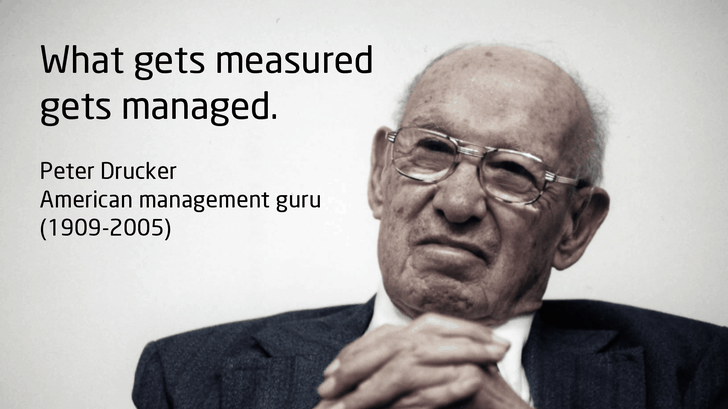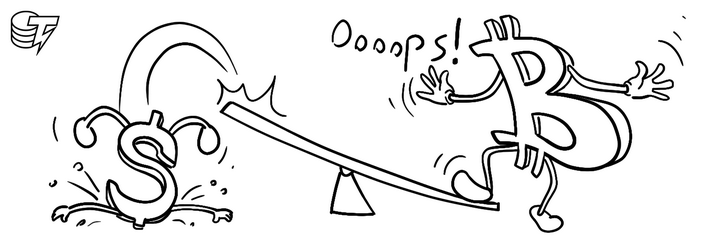Most people have no idea what their average cost per coin is and without knowing your cost, how can you make educated financial decisions?
That's like running a business without knowing how much you paid for the products that you sell.
Normal everyday people around the world will not realize Bitcoin’s potential until this function becomes a seamless wallet feature and as common as deterministic wallets are now.
"Buy when there is blood in the streets, even if the blood is your own."
– Baron Rothschild
This is an old saying that relates to trading stocks but it also holds true for a number of commodities that endure drastic price swings such as gold, oil and even food. This is also true of Bitcoin. Whenever you read blog posts like "Bitcoin price crashes" or "Bitcoin is doomed" that means that there is "Bitcoin blood on the streets" and it's time to BUY.
But how do you know when to buy and how much? What if the price continues to drop after you buy? Who wants to be buying when the price of something is falling? That sounds like financial suicide, doesn't it? But quite the opposite is true. History has shown us that those who have bought during a downtrend have set themselves up for success down the road.
Adding up the numbers

What Peter is talking about is managing a business but the same is true for managing your bitcoins. Allow me to explain something called dollar cost averaging or DCA for short.
Here's how it works. Let's say that you bought 1 bitcoin when the price was at US$500. This means that your average cost per bitcoin is US$500. As we all know the price of Bitcoin is below US$500 today so that puts you at a loss. As I am writing this article the price of BTC is around US$220, so if you bought 1 more bitcoin today you now have 2 bitcoins and you have spent a total of US$720 on those two coins, which means that your average cost per bitcoin is now only US$360 (US$720 divided by 2.)
This is where the saying "buy when there is blood in the streets" came from. It means that as the price falls, it is "on sale" so to speak and you should be buying as you are greatly reducing your cost per unit and setting yourself up for increased profitability later. Now let's say that you buy another 4 bitcoins at US$220 each for a total of US$880. Now you have a total of 6 bitcoins for a total cost of US$1600. US$1600 divded by 6 is just US$266.66 per coin so your average cost per coin is much, much less than your initial US$500 coin.
Most of us however probably aren't buying in single-coin increments so the math gets much more tricky when you receive weird numbers like 0.29641701 coins.
This method is how a number of gas stations purchase their gasoline and how some restaurants purchase fish because market prices for certain fish fluctuate with supply and demand. (Look for the words "Market Price" next time you're at a seafood restaurant.) I also wouldn't be surprised if there are some massive corporations that use DCA to hedge against volatility.
Phases of attack
I don't like the idea of Bitcoin just being some speculative tool for you to buy and sell and buy and sell in some zero-sum gain routine. I don't really like the idea of selling Bitcoin to exchanges at all. Bitcoin is money; money is for buying goods and services in the real world that enrich the lives of human beings. So once you know your average cost per coin, you know what the price of Bitcoin needs to be before you spend them.
As long as the price of Bitcoin is below your average cost, you are in the "acquisition phase" where you buy and/or keep larger percentages of the coins that you receive for goods and services (some merchants might hold 100% when the cost is below their DCA). Accepting coins for goods and services is what builds an actual Bitcoin economy instead of some dumb investment scheme.
When the price is above your average cost, you enter "the utilization phase" where you use your additional purchasing power to spend and get more goods and services for your money. When enough people are doing this, we will begin to see an upward trend in Bitcoin’s value because fewer people are selling off their coins in some sort of panic and more people will establish Bitcoin savings. Widespread use is what really scares banks and if enough people utilize Dollar Cost Averaging (DCA), more people will hold onto their coins, Bitcoin’s price will likely stabilize and large numbers of people will realize that they don't need a bank at all. This is bad news for banks and their accompanying fees.
Note: If you are a merchant or get paid in Bitcoin, you have no control over when you acquire coins, so you might want to hold less when the price is above your DCA and more when the price is below your DCA. That's why I propose DCA as a built-in feature with all wallets and exchanges like BitPay.

Don’t just stand there…
Here comes the 1-2 punch that sound money delivers to the despotic inroads of governments and central banks. When you acquire below your average cost per coin (receive or buy), your average cost per coin falls. When you utilize above your average cost per coin (spend or sell), your average cost per coin also falls. You win with both!
This is probably the single most important function that is missing from services like BitPay and every Bitcoin wallet available today.
This needs to be a standard feature for every wallet for both merchants and consumers. Without this feature, Bitcoin is much more of a gamble for the common man and if you don't know how to manage a dollar cost average calculator, you will almost certainly lose money with Bitcoin.
In conclusion, more people regularly using, saving or speculating in the Bitcoin space need to better measure and manage their bitcoins. Buying when there is "blood in the streets" is one way to lower your average cost and hopefully set you and the entire Bitcoin economy up for a future with much more purchasing power.
If BitPay is reading this, please implement a dollar cost averaging tool into your service so more of your merchants will hold larger percentages of their coins while also reducing risk for those merchants.
Thanks for reading, and if you see this hidden potential, please share this post... especially if you know any wallet developers or anyone at BitPay. Viva Bitcoin!

